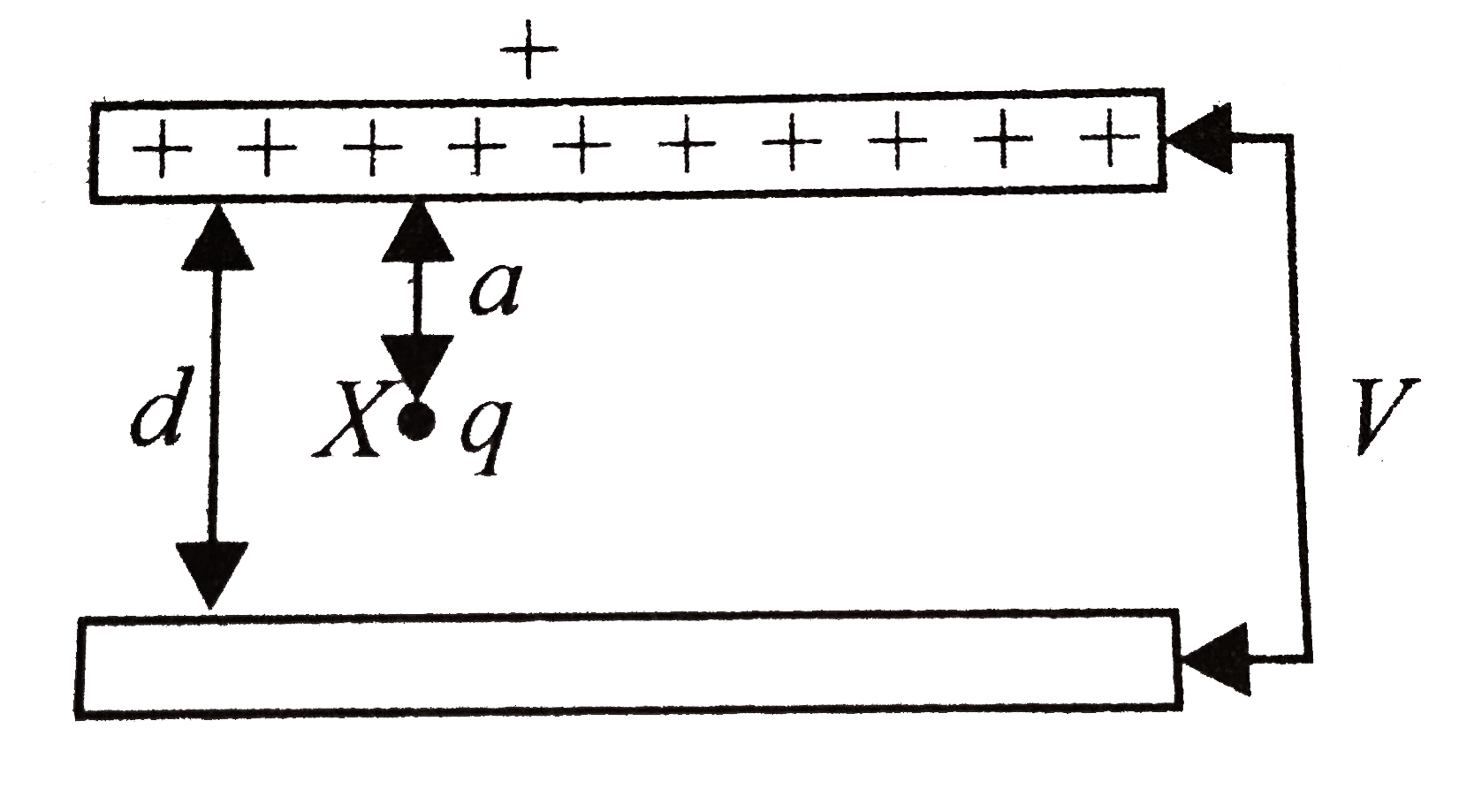A charge Q is uniformly distributed over a large plastic plate. The electric field at a point P close to the centre of the plate is 10Vm−1. If the plastic plate is replaced by a copper plate of the same geometrical dimension and carryin the same charge Q the electric field at the point P will become
zero
5Vm−1
10Vm−1
20Vm−1
The correct Answer is:C
To solve the problem, we will analyze the electric field produced by a uniformly charged plate, first for a non-conducting plate and then for a conducting plate.
1. Understanding the Electric Field of a Non-Conducting Plate:
- For a non-conducting plate with a uniform surface charge density σ, the electric field E at a point close to the center of the plate is given by the formula:
E=σ2ϵ0
- Here, ϵ0 is the permittivity of free space.
2. Given Information:
- The electric field E at point P close to the center of the plastic plate is given as 10V/m.
- Therefore, we can write:
σ2ϵ0=10V/m
3. Calculating Surface Charge Density σ:
- Rearranging the equation gives:
σ=20ϵ0
4. Replacing the Plastic Plate with a Conducting Plate:
- When the plastic plate is replaced by a conducting plate (copper), the charge Q will distribute itself on the outer surface of the conductor.
- For a conducting plate, the electric field inside the conductor is zero, and the electric field just outside the surface of the conductor is given by:
E=σϵ0
5. Calculating the New Electric Field at Point P:
- Since the charge Q is the same and distributed on both sides of the conducting plate, the electric field at point P (which is outside the plate) will be:
E=σϵ0=20ϵ0ϵ0=20V/m
6. Conclusion:
- The electric field at point P when the plastic plate is replaced by a copper plate is 20V/m.
Final Answer:
The electric field at point P will become 20V/m.
---
- For a non-conducting plate with a uniform surface charge density σ, the electric field E at a point close to the center of the plate is given by the formula:
E=σ2ϵ0
- Here, ϵ0 is the permittivity of free space.
- The electric field E at point P close to the center of the plastic plate is given as 10V/m.
- Therefore, we can write:
σ2ϵ0=10V/m
- Rearranging the equation gives:
σ=20ϵ0
- When the plastic plate is replaced by a conducting plate (copper), the charge Q will distribute itself on the outer surface of the conductor.
- For a conducting plate, the electric field inside the conductor is zero, and the electric field just outside the surface of the conductor is given by:
E=σϵ0
- Since the charge Q is the same and distributed on both sides of the conducting plate, the electric field at point P (which is outside the plate) will be:
E=σϵ0=20ϵ0ϵ0=20V/m
- The electric field at point P when the plastic plate is replaced by a copper plate is 20V/m.
The electric field at point P will become 20V/m.
Topper's Solved these Questions
- ELECTROSTATICSBOOK - DC PANDEY ENGLISHCHAPTER - ELECTROSTATICSEXERCISE - Match the columns
5 Videos
- ELECTROSTATIC POTENTIAL AND CAPACITORSBOOK - DC PANDEY ENGLISHCHAPTER - ELECTROSTATIC POTENTIAL AND CAPACITORSEXERCISE - (C) Chapter exercises
50 Videos
- GRAVITATIONBOOK - DC PANDEY ENGLISHCHAPTER - GRAVITATIONEXERCISE - All Questions
135 Videos
Similar Questions
Charge q is uniformly distributed over a thin half ring of radius R. The electric field at the centre of the ring is
View SolutionA charge q is uniformly distributed over a quarter circular ring of radius r. The magnitude of electric field strength at the centre of the ring will be
View SolutionElectric charge Q is uniformly distributed around a thin ring of radius a. find the potential a point P on the axis of the ring at a distance x from the centre of the ring .

View SolutionA ring of radius a contains a charge q distributed. uniformly ober its length. Find the electric field at a point. on the axis of the ring at a distance x from the centre.
View SolutionTwo large conducting plates X and Y. each having large surface area A (on one side), are placed parallel to each other as shown in figure (30-E7). The plate X is given a charge Q whereas the other is neutral. Find (a) the surface charge density at the inner surface of the plates X, (b) the electric field at a point to the left of the plates, (c) the electric field at a point in between the plates and (d) the electric field at a point to the right of the plates.

View SolutionA parallel plate capacitor has an electric field of 105V/m between the plates. If the charge on the capacitor plate is 1μC, then force on each capacitor plate is-
View SolutionTwo point charges q AND 2q are placed at (a,0) and (0,a) A point charge q1 is placed at a P on the quarter circle of radius a as shown in the diagram so that the electric field at the origin becomes zero

View SolutionA point charge q is situated at X between two parallel plates which have a potential difference V and carry charges +Q and −Q. What is the electric field strength at X ?

View SolutionAn uncharged parallel plate capacitor is connected to a battery. The electric field between the plates is 10V/m. Now a dielectric of dielectric constant 2 is inserted between the plates filling the entries space. The electric field between the plates now is
View SolutionA wire of length l and charge q is bent in form of a semicircle. The charge is uniformly distributed over the length. The electric field at the centre of semicircle is
View Solution
